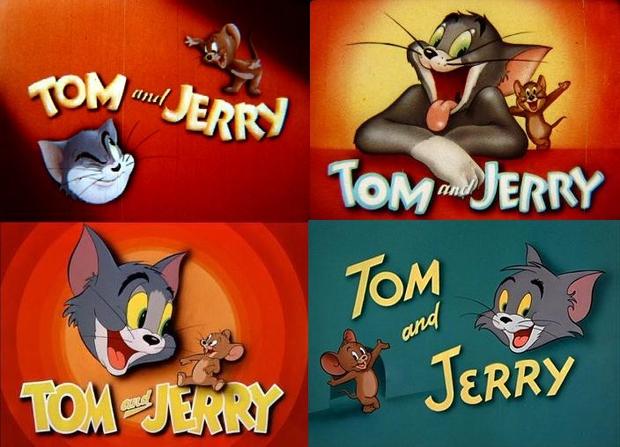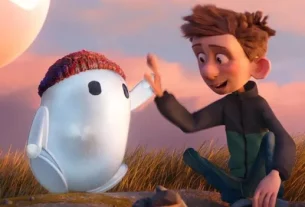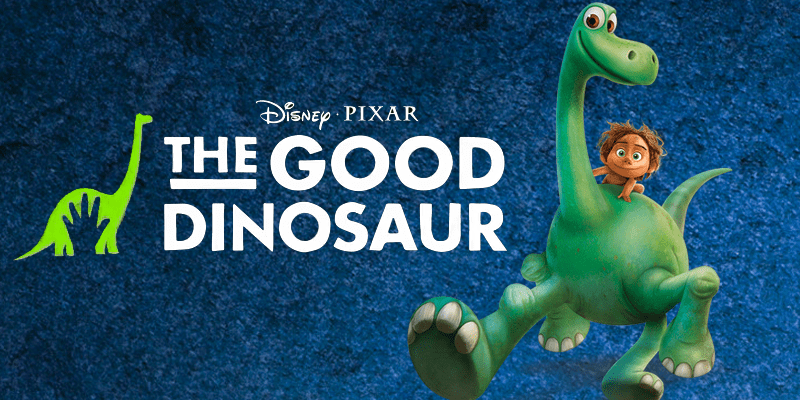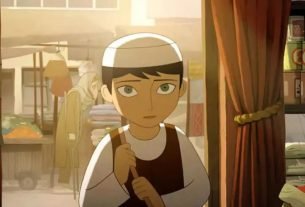Mentioned (Tom and Jerry), this is probably one of the cartoons that global audiences know and love most.
For many netizens, it has been a long time since there are summer holidays.
I think back then, some people’s summer vacation belonged to “Doraemon”, “Transformers” and “Saint Seiya”, and some people’s summer vacation belonged to “Shuke and Beita”…
There are also such audiences. Their childhood summer vacation was spent chasing and playing with a blue Tom cat and a yellow Jerry rat.
In 2013, the symphony performance in “Tom and Jerry”
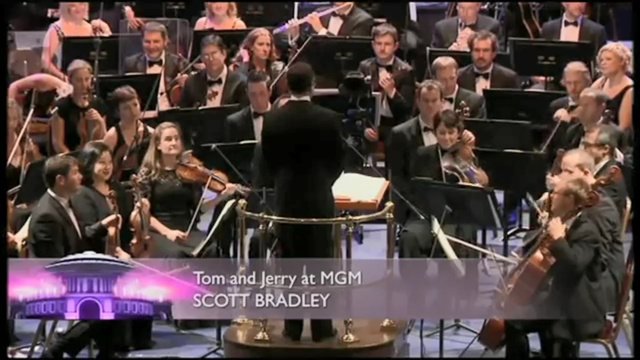
“Tom and Jerry” is an American animated series of short films created on May 8, 1939 by William Hanna and Joseph Barbera.
Cats and mice in nature have a cruelty of bullying.
But in the cartoons we are familiar with, this cruelty is completely eliminated. Tom and Jerry are more like a pair of contradictory cohabiting tenants.
When they disagree, they quarrel with each other and use various pranks to vent their dissatisfaction with each other.
Tom is often the active side of the chase because of his size, while Jerry is a small devil and has more genius and imagination for the use of pranks.
Although this kind of battle between you and me is often unbearable, we can all believe from the bottom of our hearts that there will be no substantial harm on both sides.
In the previous shot, it was squashed, broken, scorched, and even ascended to heaven after death. In the latter shot, it will jump up again and continue to chase more crazily.
It is this invincible treatment that allows us to satisfy the desire to see crazy destruction on the screen on the one hand.
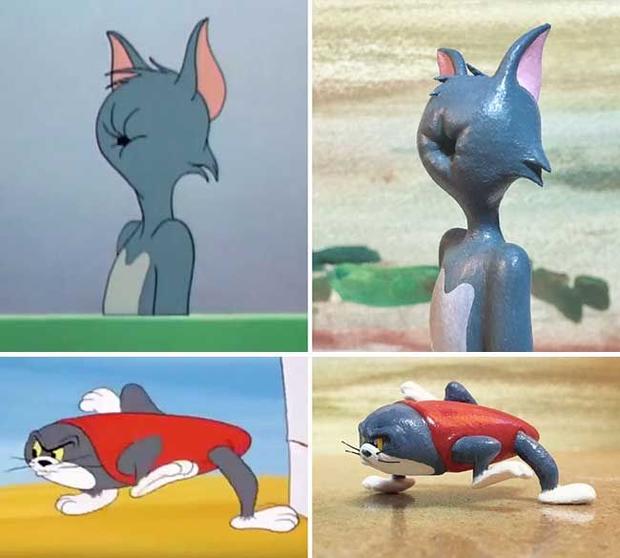
On the other hand, there will be no violent feeling, just light and fun.
Although these two guys are not big, but in terms of the amount of things being destroyed, the two brothers must be among the best in all cartoons.
When “Tom and Jerry” was first introduced in Taiwan in 1970, Taiwan TV temporarily translated it as meow meow.
Later, the DVD released by Warner Home Entertainment in Taiwan was translated as “Tom Cat and Jamie Mouse”.
When it was broadcast by various TV stations in mainland China in the 1980s, it was translated as “Thom and Little Jerry”, and the Cantonese version of it was translated as “The Enchanted Cat” by Southern TV Station.
Tom and Jerry in different eras
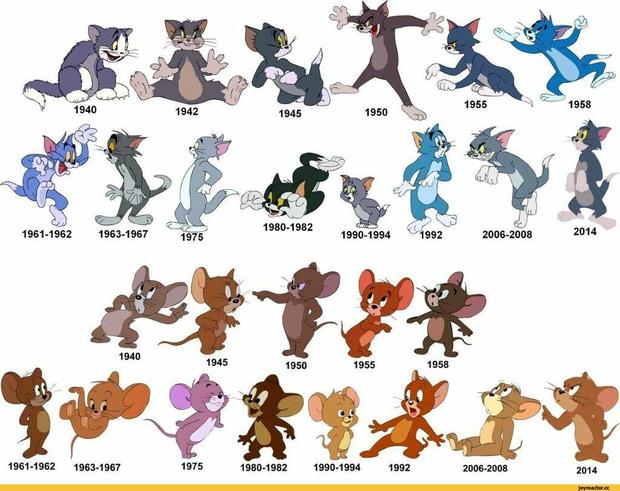
At first glance, you might think “Tom and Jerry” is a super long-lived cartoon broadcast on TV.
From more than 80 years ago to the present, I couldn’t finish it when I was young.
In fact, many people saw less than 200 episodes on CCTV when they were young.
Many small audiences may have wondered, why did the two protagonists in the “Tom and Jerry” cartoon that “always never finish” changed?
Because this IP has gone through different periods, not only the characters have different styles, personalities, and creative teams, but also some modifications due to historical reasons.
Most importantly, in theory, “Tom and Jerry” is not a TV series-it is a short film shown in theaters.
The founders and their seven Oscars
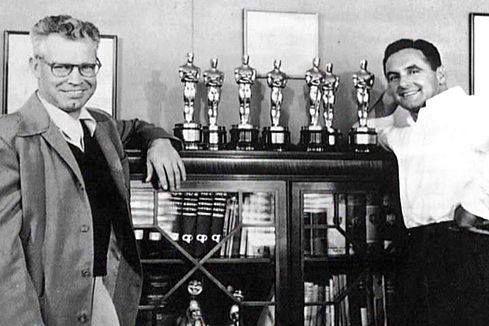
Hannah-Barbera period (1940-1958)
From 1940 to 1958, the two founders of “Tom and Jerry” William Hanna and Joseph Barbera produced 114 episodes of “Tom and Jerry” short film for MGM.
Not a TV series, they won seven Oscars for “Best Animated Short Film” awards for this.
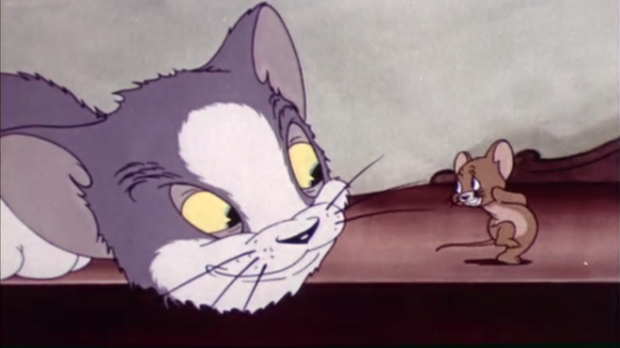
In the early 1940s, Tom looked more like a real cat on all fours, and his body shape has changed significantly over the years.
Tom began to become closer to walking upright and more “personalized”. In contrast, Jerry’s design has only minor changes in his face and body shape.
Speaking of “Tom and Jerry”, one of the supporting roles I have to mention is the “two-shoe lady” who always only hears the person, but does not see the true face of the mountain.
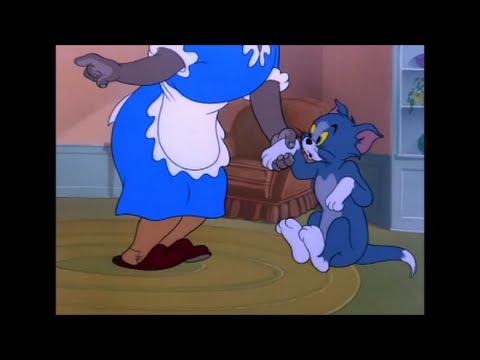
She is an obese middle-aged black woman, and in most cases, she is also Tom’s master.
She often uses violence to resolve the chaos caused by Tom and Jerry.
Interestingly, Tom and Jerry rarely talk in the short film—even if they have occasional voices, they are dubbed by Hannah and Barbera.
Gene Deitch Period (1961-1962)
After the MGM Cartoon Studio closed in 1958, MGM and director Gene Deitch restarted the series.
Signed a contract with Rembrandt Films, an animation studio in Eastern Europe, and produced 13 episodes of “Tom and Jerry” short film in Prague, Czechoslovakia.
Compared with the exquisite Hanna-Barbera short film, Dyqi’s short film has a simpler background, a more peculiar angle, and an Art Deco style.
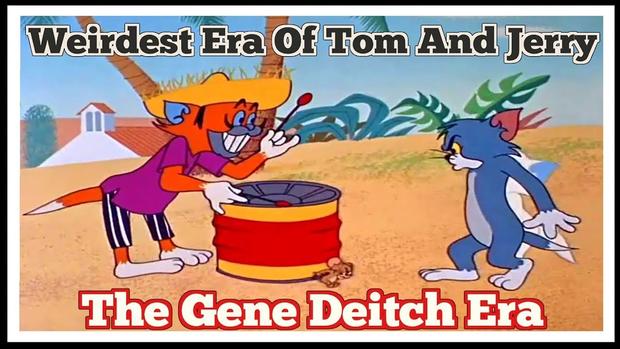
In the words of The New York Times, “The Czech version and the original “Tom and Jerry” cartoon have nothing in common.”
For example, Hannah-Barbera’s short films usually take place in the backyard, while Deitch’s short films choose a more exotic place.
Like the 19th century whaling ship, the jungle of Nairobi, the upper city of ancient Greece, or the western United States.
According to the media, De Qi’s version of “Tom and Jerry” is the strangest
In order to avoid linking with the CPSU (chronological characteristics), Dai Qi “Romanized” all the names in the short film’s producer list.
De Qi’s short film was a commercial success. In 1961, “Tom and Jerry” became the highest-grossing animated short film series at the time.
However, unlike Hanna-Barbera’s short film, Deitch’s short film has not been nominated or won an Oscar.
In retrospect, people thought these short films were the worst and weirdest in the “Tom and Jerry” series.
Although facing a lot of criticism, it still cannot be denied that De Qi’s style has an impact on “Tom and Jerry” due to its bizarre and surreal approach.
“Thom and Jerry” introduced in Mainland China in 1989
Strictly speaking, the 161 episodes of short films produced by MGM between 1940 and 1967 are all movies because they are all classified by the MPAA.
It is worth mentioning that Director Dai Qi just passed away on April 13 this year, at the age of 95, countless mainland media are publishing memorial reports similar to “We lost XXX in our childhood”.
However, when “Tom and Jerry” first appeared on the small screen in mainland China in 1989, the 32-episode “Tom and Jerry” did not include the works of director De Qi, mainly the oldest version of Hannah-Ba The works of Burla’s two golden partners.
Director Dai Qi’s introduction of “Cat and Mouse” has almost nothing to do with our childhood.
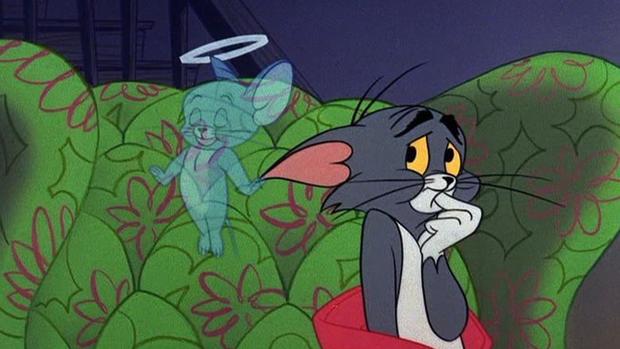
Chuck Jones period (1963-1967)
Chuck Jones, who jumped from Warner Bros. Animation Department, and his partner Les Goldman founded his own animation studio “Twin Tower 12 Studio” (later renamed MGM Animation/Visual Arts).
Since 1963, Jones and Goldman Sachs have continued to produce 34 episodes of “Tom and Jerry” short films, all with Jones’s distinctive psychedelic abstract style.
Jones’s signature humor makes his cartoons more popular in terms of character personality and storyline.
The appearance of the character has changed slightly: Tom’s eyebrows are thicker, his fur has changed from blue to gray, his ears are sharper and his tail is longer, and Jerry’s eyes and ears have also become larger.
Although it is generally believed that Jones’s short films are better than Dyche’s, their success is based on different perspectives in different fields.
MGM stopped making “Tom and Jerry” in 1967, and Jones then turned his attention to feature films.
“Tom and Jerry” TV hit
Beginning in 1965, Hanna-Barbera’s version of “Tom and Jerry” began to appear on TV screens after extensive changes.
The team changed a lot of episodes that included the role of “Two Shoe Ladies” and modified the corresponding scenes.
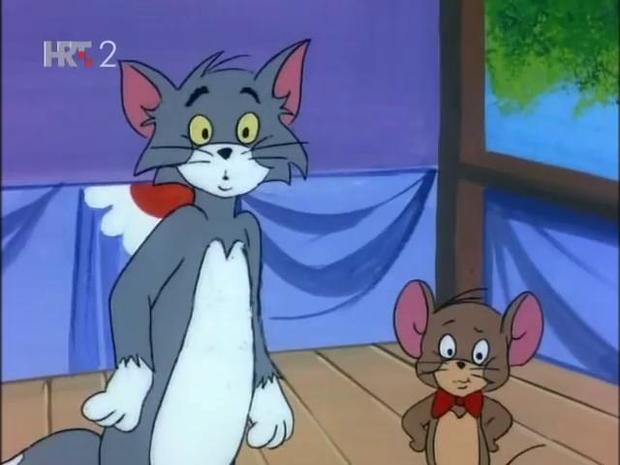
In most episodes, the role has been changed from black to white Irish, and many violent plots have been deleted.
Later, in the version broadcast on Cartoon Channel and Boomerang, the two shoe wives were re-dubbed, removing some of the slang and ways of speaking commonly used by blacks.
The second Hannah-Barbera period (1975-1977)
In 1975, “Tom and Jerry” reunited with “Father of Cat and Mouse” Hanna and Barbera. Every Saturday morning, “The Tom and Jerry Show” was played on TV on time.
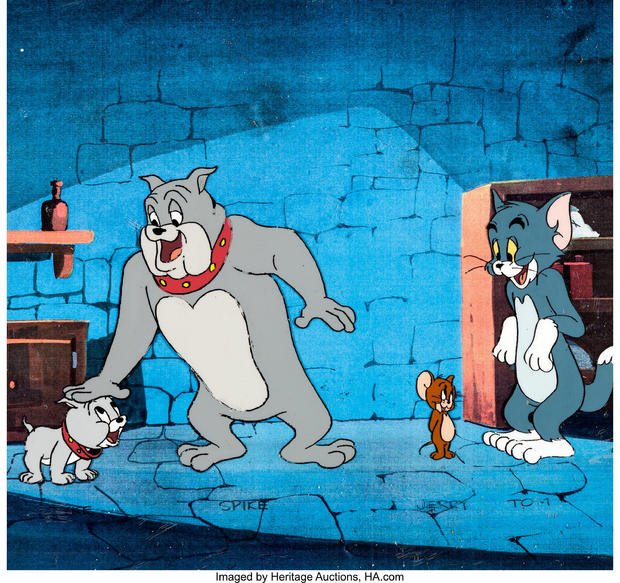
Jerry is now wearing a red bow tie. In order to satisfy the children’s demand for watching TV, Hannah-Barbera had to give up the cat and mouse chasing and playing scenes, making the cat and the mouse become good friends.
The Fei Maison period (1980-1982)
Pimison Studios and MGM TV have also co-produced the TV series “Tom and Jerry”.
Their version of “The New Adventures of Tom and Jerry” debuted in 1980, and it also contains characters with strong personalities.
The version of Pymeson is significantly different from the second Hanna-Barbera “child-friendly” series. Tom and Jerry are chasing again, but in a more “farce” humorous form.
This image is very similar to the 1975 version, and it has also been well received by the audience.
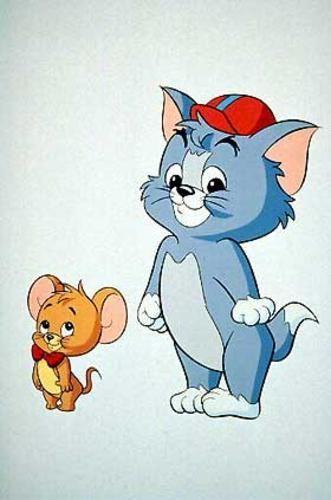
In 1991, the CCTV version again introduced about 130 episodes of a hodgepodge version of “Tom and Jerry”, which can be said to be all-encompassing.
The first 57 episodes are mainly composed of the early MGM version, the TV station exclusive version of the “Second Hanna-Barbera” period in 1975, and the “Outsourced” version of Pymeson in 1980.
Here is the answer again, why the audience feel that the appearance of cats and mice always changes.
The new owner of “Tom and Jerry”
In 1986, MGM was acquired by Ted Turner, the founder of Turner Broadcasting and Television (TBS).
After the acquisition, the film library of MGM before 1986 was retained, making “Tom and Jerry” the property of Turner Entertainment, which was broadcast on cable television stations such as TBS in the following years.
The third Hannah-Barbera period (1990-1994)
In the 1980s and 1990s, the biggest development trend in the television industry was to introduce classic cartoon images.
Turner Entertainment and Hanna Barbera Studio (sold to Turner in 1991) produced “Tom and Jerry Kids Show” on March 2, 1990, which was broadcast on Fox Children’s Animation, UK.
Tom and Jerry chasing each other here are both “smaller”. Like the “Second Hannah-Barbera” period in 1975, Jerry still wears his red bow tie, and Tom now wears a red hat.
Spike and his son Teck (the bulldog father and son) now have a conversation! Often interspersed in various episodes.
The introduced version of “Tom and Jerry” from mainland China has become the familiar 1990 “Tom and Jerry Kids Show” from episode 58 onwards.
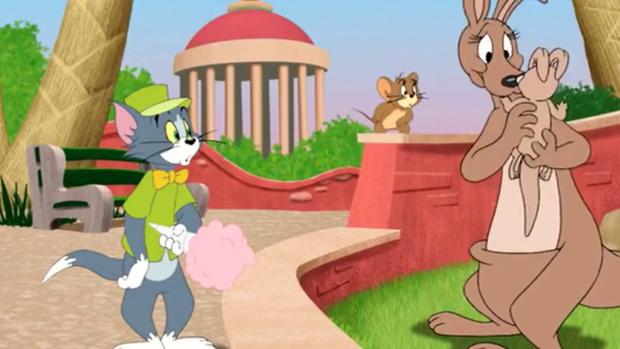
Special reminder is that the introduction of “Tom and Jerry” that year is not only confusing in version, but for some reasons, the splicing combination of the opening and ending credits is not surprising.
In 1996, Time Warner acquired Turner Entertainment, and “Tom and Jerry” is now Warner’s!
Warner Bros. Period (2006 to present)
In the first half of 2006, Warner Bros. Animation produced a new TV series called “Tom and Jerry Tales”, a total of 13 episodes, each half an hour, each episode includes 3 short films.
This is the first time in the TV history of “Tom and Jerry” that the original classic short film style was adopted, supplemented by a “farce” form, and it was cut in 2008.
Cartoon Channel began to rebroadcast “Tom and Jerry Tales” in January 2012, and then broadcast a second series called “Tom and Jerry 2014”.
There are 2 short films in each episode, each of which is 11 minutes long. It also tries to maintain the appearance and core role of the original short film.
Several episodes of the new series brought Tom and Jerry to a contemporary environment, telling new stories.
Sometimes the characters are relocated to more dreamy worlds, including medieval castles and mad scientists’ laboratories.
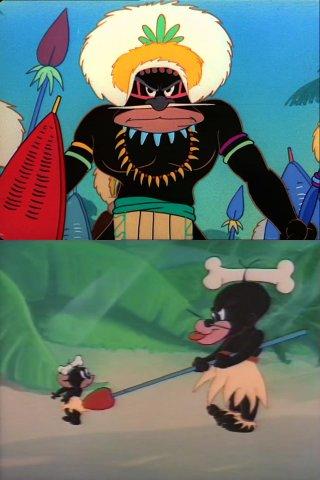
Later, no matter if it was rebroadcast on TV or on DVD released, some episodes were reproduced.
Including the repeated appearance of the black character “Two Shoe Wives”, and the scenes of “painting black face” pretending to be black, plots of black cannibals, smoking scenes and so on.
Either delete some of the controversial shots, or redesign and draw the character image, or re-dubbing as mentioned above.
The live-action + CG version of “Tom and Jerry” film produced by Warner was originally scheduled to be released in December 2020.
Starring Chloe Grace Moretz and Michael Penha, but it was postponed to next year due to the epidemic.
Tom and Jerry with Chinese characteristics
“Tom and Jerry” is not only popular when it is broadcast on mainland Chinese TV stations.
After entering the 21st century, in order to release VCD, it was adapted into multiple dialect versions, and once again became popular across China.
However, dubbing the lines of “Tom and Jerry” is not a specialty of China.
In fact, Japan, a major animation country, also called for voice actors when it aired “Tom and Jerry”.
At the beginning, there was some controversy over the “dubbing” “Tom and Jerry”, thinking that once Tom and Jerry spoke, they would violate the original intention of the original animation.
However, the VCD model gradually disappeared by itself, and the controversy naturally died down.
Confronting the controversy
In the collection DVD of “Cat and Mouse”, black actress Ubi Goldberg quoted Warner Bros.
She claimed that the cartoon contained content that could be offensive, and emphasized that they were wrong in the past and in the present:
“The animation content you will see is the product of their era.
They portray a very common phenomenon of racial prejudice in American society. These depictions were wrong in the past, and they are also wrong now.
The content in the cartoons does not reflect the views of Warner Bros. on today’s society. They are broadcast as they are.
Because if it doesn’t (such as coding and deletion), it’s equivalent to saying that these prejudices have never really existed. “
